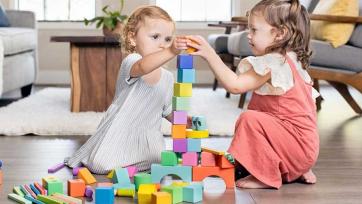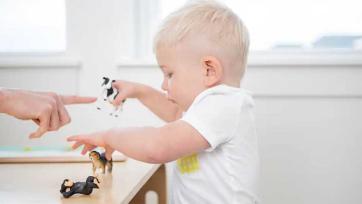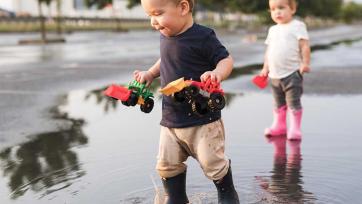Your toddler can learn good things from music. It will not only give him a tune to sway to, but it will also get him started on learning. Experts say music adds to a rich sensory environment that makes learning easier. Toddlers who take music lessons learn about different smells, flavors, textures, sounds, and colors.
Your toddler can learn and grow with the help of a catchy tune. Your child can learn to connect things just by listening to music. So let him take part in things that have to do with music. If you sing him a song, his little hips and feet might start to move. Want more? He can also fall asleep to a nightly lullaby. Do you now believe that music has power?

Benefits of Teaching Young kids Music
Music helps children's brains develop.
Parents have always understood that music and singing assist children in developing early cognitive abilities, such as learning the alphabet and singing along with a favorite song. Music wakes up parts of the brain that control hearing, remembering, moving, and feeling.
In the last 20 years, many studies have looked at how music affects children's brains. One of the most important came from the Institute of Behavioral Sciences at the University of Helsinki. They found that listening to songs helped kids' brains grow, especially regarding spatial reasoning.
Children's social skills are enhanced by music.
Music can also help kids learn social skills, like how to read other people's faces, talk to their peers, and understand how others feel. Learning to play a piece of music with other people is a great way to improve your ability to get along with others. It's not just about technique; it's also about expressing yourself and working with others.
Children's creativity is boosted by music.
Researchers say that kids who learn music are better at solving problems and more innovative than those who don't. The study was completed by the University of California, Santa Barbara, and the results are in the Journal of Studies in Music Education.
Children's behavior is better when they listen to music.
Typically, youngsters begin their musical education with nursery rhymes and progress to studying an instrument. Adults often see these things as ways to keep kids busy, but they help kids learn to be responsible and improve their coordination. Recent studies have shown that kids who learn to play instruments tend to be better-behaved and much more self-disciplined than one‘s peers.
It gives them a boost of confidence.
A recent study indicated that children exposed to music at home are more self-confident, have better grades, and thrive in sports. And when it concerns self-esteem, children who take music lessons do better on self-esteem tests than those who don't.
It helps improve their memory.
People also think that playing an instrument helps kids remember things. Children who learn music are better at paying attention and remembering things. They also have more brain activity related to sustained attention and auditory encoding. These executive functions are linked to better reading, resilience, creativity, and quality of life.
The part of the brain that helps form and organizes memories, the hippocampus, gets stronger when you practice music. According to the study linked above, music is an excellent tool for keeping your mind sharp, and listening to music throughout your life can assist you in maintaining your cognitive skills even as you get older.
Music helps kids learn the language.
Learning to speak and then use language is one of the most important things a child can do. If you're a parent or teacher, here's some good news: playing a musical instrument as a child can enhance learning skills by making stronger connections within the brain. As a baby grows, he or she will begin comprehending the sounds they or hear. A child can learn to differentiate different sounds by listening to music.
Music is an inborn mood-booster
Listening to music is among life's simple pleasures, and I'm sure you'll agree. It makes you feel joy, happiness, and peace inside. Specifically, music has been shown to make people feel less stressed, making it a great tool for helping kids. Music is good for kids since it calms, soothes, and keeps them busy.
It improves their ability to control themselves.
Self-regulation is being able to control our actions, feelings, and urges. Children who are better at self-regulation are usually more centered, calm, organized, and able to control themselves. This greatly affects how well they do in school and, in the long run, in life. Playing music helps a child learn how to control himself or herself.
It helps toddlers develop coordination.
A lot of coordination is often needed to play a musical instrument well. This is true even for very early music lessons. It's always good to get a head start on learning how to work together.
Conclusion
With so many things to do, parents must work hard to get their kids to do things that will be good for them in the long run. One of these things is music. It has many short-term and long-term advantages!








